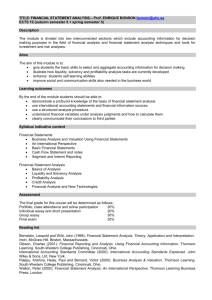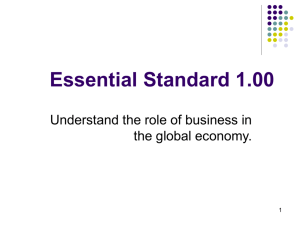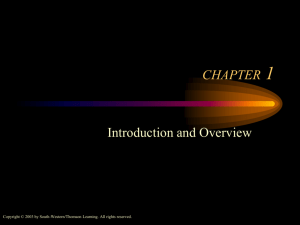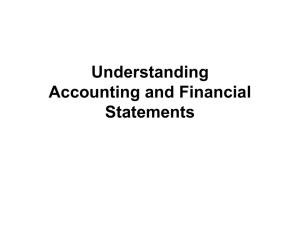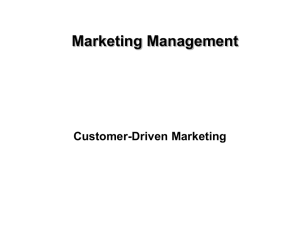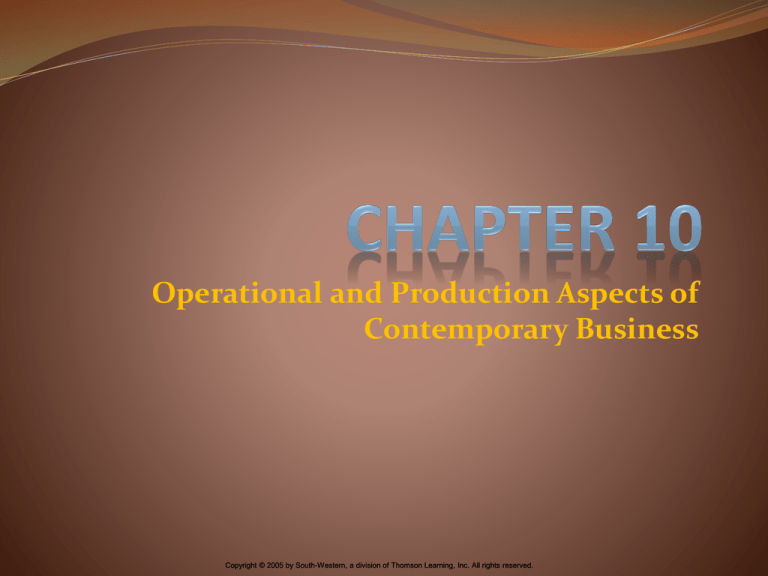
Operational and Production Aspects of
Contemporary Business
Copyright © 2005 by South-Western, a division of Thomson Learning, Inc. All rights reserved.
Strategic Importance of the
Production Function
Production—application of resources such as
people and machinery to convert materials into
finished goods and services.
Production and Operations Management—
managing people and machinery in converting
materials and resources into finished goods and
services.
Copyright © 2005 by South-Western, a division of Thomson Learning, Inc. All rights reserved.
The Production Process: Converting Inputs to
Outputs
Copyright © 2005 by South-Western, a division of Thomson Learning, Inc. All rights reserved.
11-3
Typical
Production
Systems
Copyright © 2005 by South-Western, a division of Thomson Learning, Inc. All rights reserved.
11-4
Strategic Importance of the
Production Function
Without production, none of the other functions
would operate
Production function adds value to a company’s
inputs by converting them into marketable outputs
Copyright © 2005 by South-Western, a division of Thomson Learning, Inc. All rights reserved.
11-5
Strategic Importance of the
Production Function
Mass Production—system for manufacturing
products in large amounts through effective
combinations of employees with specialized skills,
mechanization, and standardization
Assembly Line—manufacturing technique that
carries the product on a conveyor system past several
workstations where workers perform specialized
tasks.
Copyright © 2005 by South-Western, a division of Thomson Learning, Inc. All rights reserved.
11-6
Strategic Importance of the
Production Function
Flexible production—cost-effective system of
producing small batches of similar items
Customer-driven production—system that
evaluates customer demands in order to link what a
manufacture makes with what the customers want
to buy
Team concept—combines employees from various
departments and functions to work together in
designing and building products
Copyright © 2005 by South-Western, a division of Thomson Learning, Inc. All rights reserved.
11-7
Technology and the Production Process
Green Manufacturing Process LEED (Leadership in Energy and Environmental
Design)- voluntary certification program administered
by the U.S. Green Building Council, aimed at promoting
the most sustainable construction processes available
Robots
Copyright © 2005 by South-Western, a division of Thomson Learning, Inc. All rights reserved.
11-8
Technology and the Production Process
Computer-Aided Design and Manufacturing
Computer-aided design (CAD) process that allows
engineers to design components as well as entire
products on computer screens faster and with fewer
mistakes than they could achieve working with
traditional drafting systems.
Computer-aided manufacturing (CAM) computer
tools to analyze CAD output and enable a manufacturer
to analyze the steps that a machine must take to produce
a needed product or part.
Copyright © 2005 by South-Western, a division of Thomson Learning, Inc. All rights reserved.
11-9
Technology and the Production Process
Flexible Manufacturing System
FMS production facility that workers can quickly
modify to manufacture different products.
Computer-Integrated Manufacturing
(CIM) production system in which computers help
workers design products, control machines, handle
materials, and control the production function in an
integrated fashion.
Copyright © 2005 by South-Western, a division of Thomson Learning, Inc. All rights reserved.
11-10
Production Management Tasks
The Job of Production Managers
Copyright © 2005 by South-Western, a division of Thomson Learning, Inc. All rights reserved.
11-11
The Job of Production Managers
Planning the Production Process
Marketing research studies:
Solicit consumer reactions to proposed products
Test prototypes of new items
Estimate their potential sales and profitability levels
Copyright © 2005 by South-Western, a division of Thomson Learning, Inc. All rights reserved.
11-12
The Job of Production
Managers
Determining the
Facility Layout
Copyright © 2005 by South-Western, a division of Thomson Learning, Inc. All rights reserved.
11-13
The Job of Production Managers
Implementing the Production Plan
Make, buy, or lease decision: choosing whether to
manufacture a needed product or component in
house, purchase it from an outside supplier, or lease
it
Selection of Suppliers
Managers compare quality, prices, dependability of
delivery, and services offered by competing suppliers
Copyright © 2005 by South-Western, a division of Thomson Learning, Inc. All rights reserved.
11-14
The Job of Production Managers
Inventory Control
Requires balancing the need to keep stocks on hand
to meet demand against the expenses of carrying the
inventory
Perpetual inventory: system that continuously
monitors the amounts and location of inventory
Vendor-managed inventory: system that hands over
a firm’s inventory control functions to suppliers
Copyright © 2005 by South-Western, a division of Thomson Learning, Inc. All rights reserved.
11-15
The Job of Production Managers
Implementing the Production Plan
Just-in-Time System— broad management philosophy
that reaches beyond the narrow activity of inventory
control to influence the entire system of production and
operations management.
Copyright © 2005 by South-Western, a division of Thomson Learning, Inc. All rights reserved.
11-16
The Job of Production Managers
Implementing the Production Plan
Material Requirement Planning (MRP)—computer-
based production planning system by which a firm can
ensure that it has needed parts and materials available at
the right time and place in the correct amounts.
Copyright © 2005 by South-Western, a division of Thomson Learning, Inc. All rights reserved.
11-17
The Job of Production Managers
Controlling the Production Process
Production control: creates a well-defined set of
procedures for coordinating people, materials, and
machinery to provide maximum production efficiency
Steps in Production Control
Copyright © 2005 by South-Western, a division of Thomson Learning, Inc. All rights reserved.
11-18
The Job of Production Managers
Controlling the Production Process
Production planning—determines the amount of
resources (including raw materials and other
components) a firm needs to produce a certain
output
Routing—determines the sequence of work
throughout the facility and specifies who will
perform each aspect of production at what location
Copyright © 2005 by South-Western, a division of Thomson Learning, Inc. All rights reserved.
11-19
The Job of Production Managers
Controlling the Production Process
Scheduling—development of timetables that specify
how long each operation in the production process takes
and when workers should perform it.
Copyright © 2005 by South-Western, a division of Thomson Learning, Inc. All rights reserved.
11-20
Sample Gantt Chart
Copyright © 2005 by South-Western, a division of Thomson Learning, Inc. All rights reserved.
11-21
PERT Diagram for Building a Home
Copyright © 2005 by South-Western, a division of Thomson Learning, Inc. All rights reserved.
11-22
The Job of Production Managers
Controlling the Production Process
Dispatching—phase of production control in which
the manager instructs each department on what
work to do and time allowed for its completion
Follow-Up—phase of production control in which
employees and their supervisors spot problems in
the production process and determine needed
adjustments
Copyright © 2005 by South-Western, a division of Thomson Learning, Inc. All rights reserved.
11-23
Importance of Quality
Quality is vital in all areas of business, including the
product development and production functions
Cost of quality is ultimately reduced by investing
money up front in quality design and development
Typical costs of poor quality include downtime, repair
costs, rework, and employee turnover
Copyright © 2005 by South-Western, a division of Thomson Learning, Inc. All rights reserved.
11-24
Importance of Quality
Benchmarking—identifying how leaders in
certain fields perform and continually comparing
and measuring performance against these
outstanding performers.
Copyright © 2005 by South-Western, a division of Thomson Learning, Inc. All rights reserved.
11-25
Importance of Quality
Quality Control—measuring goods and services
against established quality standards.
ISO Standards
International Organization for Standardization—
organization whose mission is to promote the
development of standardized products to facilitate trade
and cooperation across national borders.
Copyright © 2005 by South-Western, a division of Thomson Learning, Inc. All rights reserved.
11-26

